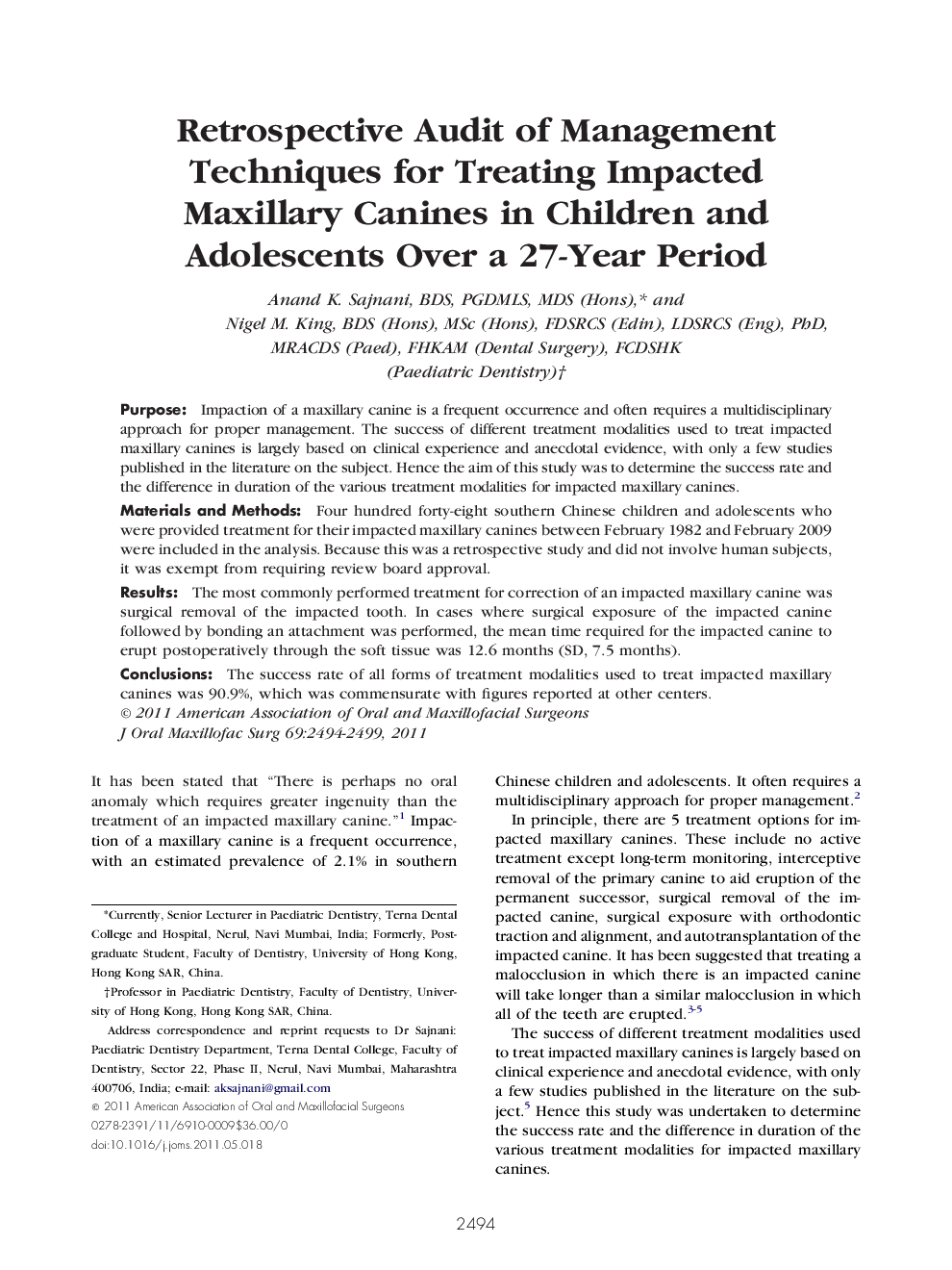| Article ID | Journal | Published Year | Pages | File Type |
|---|---|---|---|---|
| 3156808 | Journal of Oral and Maxillofacial Surgery | 2011 | 6 Pages |
PurposeImpaction of a maxillary canine is a frequent occurrence and often requires a multidisciplinary approach for proper management. The success of different treatment modalities used to treat impacted maxillary canines is largely based on clinical experience and anecdotal evidence, with only a few studies published in the literature on the subject. Hence the aim of this study was to determine the success rate and the difference in duration of the various treatment modalities for impacted maxillary canines.Materials and MethodsFour hundred forty-eight southern Chinese children and adolescents who were provided treatment for their impacted maxillary canines between February 1982 and February 2009 were included in the analysis. Because this was a retrospective study and did not involve human subjects, it was exempt from requiring review board approval.ResultsThe most commonly performed treatment for correction of an impacted maxillary canine was surgical removal of the impacted tooth. In cases where surgical exposure of the impacted canine followed by bonding an attachment was performed, the mean time required for the impacted canine to erupt postoperatively through the soft tissue was 12.6 months (SD, 7.5 months).ConclusionsThe success rate of all forms of treatment modalities used to treat impacted maxillary canines was 90.9%, which was commensurate with figures reported at other centers.
